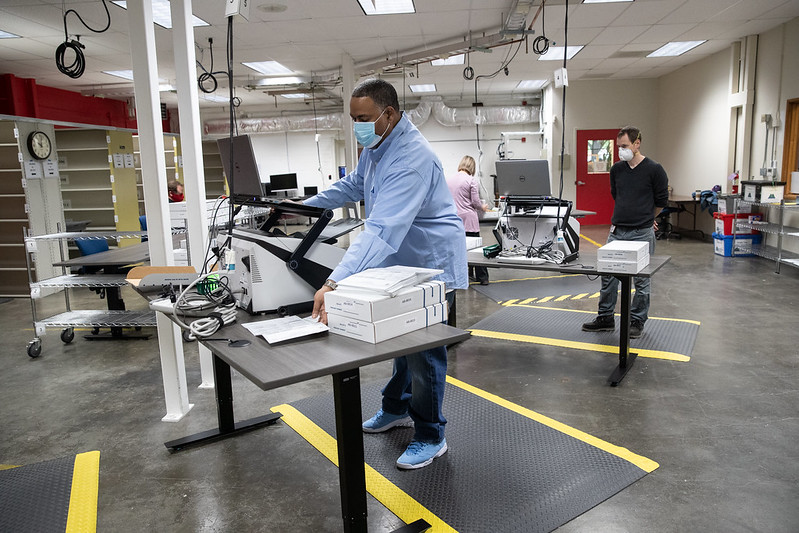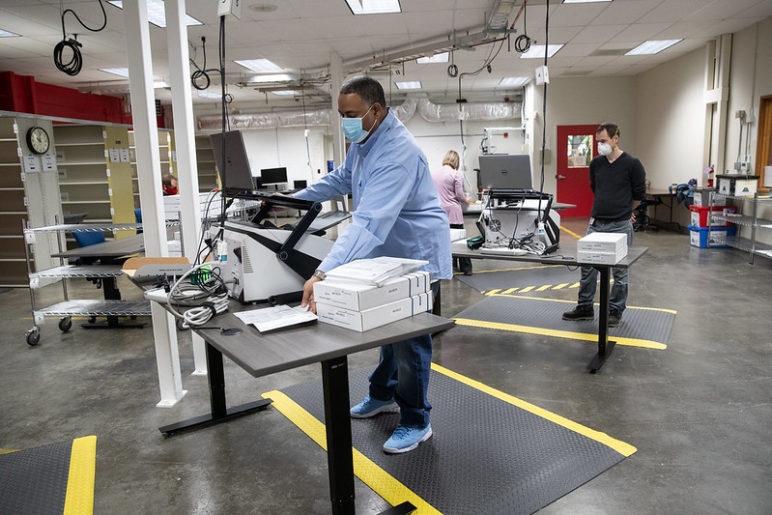What a week! Tons of elections results have already come in, and a few more contests are yet to be decided. While every race on the ballot is important, let’s focus on how some of Cascadia’s democracy-related ballot measures and elected offices turned out in the midterm elections.
No results are final until election officials certify the counts over the next month, but after a week of counting, preliminary results are pretty close to where they’ll end up. And in many cases, the margins of victory are large enough that observers such as the Associated Press and the Oregonian are confident in the winners despite some ballots left to count.
Extensive change for Portland’s government
After eight failed attempts in a century, voters approved a comprehensive change to Portland’s charter last week. At the time of writing, 58 percent of voters supported measure 26-228, the first change to the city’s government and elections systems since 1913. As part of this change, Portland will move away from its unusual commission form of government, create a larger city council with four districts each electing three members, and implement ranked choice voting for choosing city officials (including proportional ranked choice voting for each council district). For more details about the changes, check out our FAQ written before the election.
The city has already hit the ground running on implementing these changes. In 2023, an appointed districting committee will conduct research and community outreach to draw the four council districts. Applications are open now for Portlanders interested in serving on the committee, and other opportunities for engagement will be available soon. A separate salary committee will be appointed to decide compensation for the new elected officials (removing that role from city council). Finally, a general transition advisory committee will oversee and guide the city’s work to enact this ballot measure over the coming years.
The first election under the new system will occur in November 2024, when every elected position (the mayor, the auditor, and 12 councilmembers) will be contested. The new system of government goes into effect when these officials take office in January 2025, though some things will start changing in the next two years of transition. Mayor Ted Wheeler has already announced his intention to reorganize bureau assignments and get a jump-start on how departments might be run under the new city manager system. Sightline will continue to research and publish about implementation details during the transition period.
Ranked choice voting for Seattle primaries
As more ballots are received and counted, it looks like ranked choice voting will be coming to Seattle as well. Some 51 percent of voters wanted to see a change to the city’s primary elections, and fully three quarters of voters preferred that the change be ranked choice voting instead of approval voting. Seattleites will likely see ranking options on their primary ballots in August 2025, according to Sightline’s analysis.
While the city isn’t allowed to get rid of its top-two primary due to statewide rules, this vote from Washington’s largest city could be the push the state legislature needs to pass a bill that would allow localities to implement ranked choice voting in its full form—that is, not just for primary elections as in Seattle but in general elections, too.
Cascadian counties split on ranked choice voting
Multnomah County, Oregon’s largest and home to the city of Portland, supported changing to ranked choice voting by more than a two-to-one margin. This makes Multnomah the second county in Oregon to use the system, after Benton County adopted it in 2016.
Farther north, however, two Washington counties voted against changing their elections to use to ranked choice voting. Right across the Columbia River from Portland and Multnomah County, Clark County voters decided against the measure among a handful of potential charter amendments. And in the northwest corner of the state, San Juan County voters also opted against the change.
Across the rest of the country, every ballot measure for ranked choice voting is on track to pass: statewide in Nevada plus at the city level in Evanston, Illinois; Fort Collins, Colorado; Ojai, California; and Portland, Maine. Nevada’s constitutional amendment will have to pass again in 2024 before going into effect. Portland’s measure was a tweak of the city’s existing system to include proportional ranked choice voting for multi-winner races. In the rest of the races, look for ranked choice voting implementation in the coming years.
Election timing, electorate expansion, and public funding
In King County, Washington, Cascadia’s most populous county with 2.2 million people, voters approved a measure to move county elections from odd to even years by almost 70 percent. This leaves Snohomish and Whatcom counties as the only two outliers in the state that still hold county elections in odd years. Turnout in King County council and executive races will likely skyrocket due to this one simple change, and the entire state of Washington could gain these same benefits by moving other local contests onto even-year November elections.
Outside of Cascadia, the movement toward even-year elections advanced with landslide victories in Boulder, Colorado, and San Francisco, California, which both moved their remaining odd-year city elections to align with midterm and presidential elections.
In Multnomah County, Oregon, a ballot measure that would have allowed noncitizens to vote in county elections received just 47 percent of the vote. This was one of seven potential charter amendments, and the measure had some legal ambiguity around implementation.
Farther south, Oakland, California is poised to replicate Seattle’s democracy voucher system for public campaign financing. Residents will receive four $25 vouchers to give out to candidates they support for local office. Sightline covered Seattle’s implementation of this program a few years ago.
Others wait for further counting
Meanwhile in Corvallis, Oregon, and in Alaska, final results in some key races won’t be known for a few more weeks. Election administrators in both jurisdictions chose not to tabulate any results past the first round until all ballots are received and counted. Full results from Corvallis will be announced December 1, and Alaska’s will come on November 23.
Delaying these results is a choice made by election officials, not a feature inherent to ranked choice voting. Best practices recommend releasing full round-by-round tabulation of preliminary results as soon as possible, and cities across California and Utah do so with their ranked choice voting contests.
In Corvallis, races for mayor and one city council district had three candidates each. Neither had a candidate win a majority of first-choice votes, so both will require a second round of tabulation.
In Alaska, lots of legislative district and statewide races had three or four candidates. At the time of writing, the Mike Dunleavy–Nancy Dahlstrom ticket for Governor and Lieutenant Governor had more than 50 percent of first-choice votes, enough for victory without subsequent rounds of counting. Kelly Tshibaka is leading in first-choice votes in the race for US Senate, but second-choice votes from supporters of Democrat Patricia Chesbro could put incumbent Senator Lisa Murkowski back into office. Finally, Mary Peltola is in the lead for US Representative, but to get more than 50 percent, she’ll need to pick up some of the second-choice votes of Alaskans who ranked Chris Bye or Nick Begich first.
If these three results turn out as described above, Alaska could put a conservative Republican in the governorship, a moderate Republican in the Senate, and a moderate Democrat in the House of Representatives.
In the coming months, results will be certified, and the winning candidates will take their seats in office. Meanwhile, implementation on many of the ballot measures discussed above has already begun. And state and provincial legislative sessions pick up this coming winter across Cascadia. Elections may be over, but democracy doesn’t take a break!










John Whitmer
This is an excellent review of midterm election results from the perspective of various election reform efforts. It seems the northwest corner of the country is making strong and positive statements about needed reforms although we are not alone in doing so. Voters in Portland, in Nevada, in Alaska and in Seattle are adding to the increasing momentum of proportional representation and RCV. At some point in the future – hopefully not too distant – we’ll look back and wonder why these reforms didn’t occur much earlier. Alas, our history is replete with “What-were-we-possibly-thinking-back-then?” questions.
Kudos to Jay Lee for this fine review. And kudos to Sightline for supporting meaningful reforms in many areas.